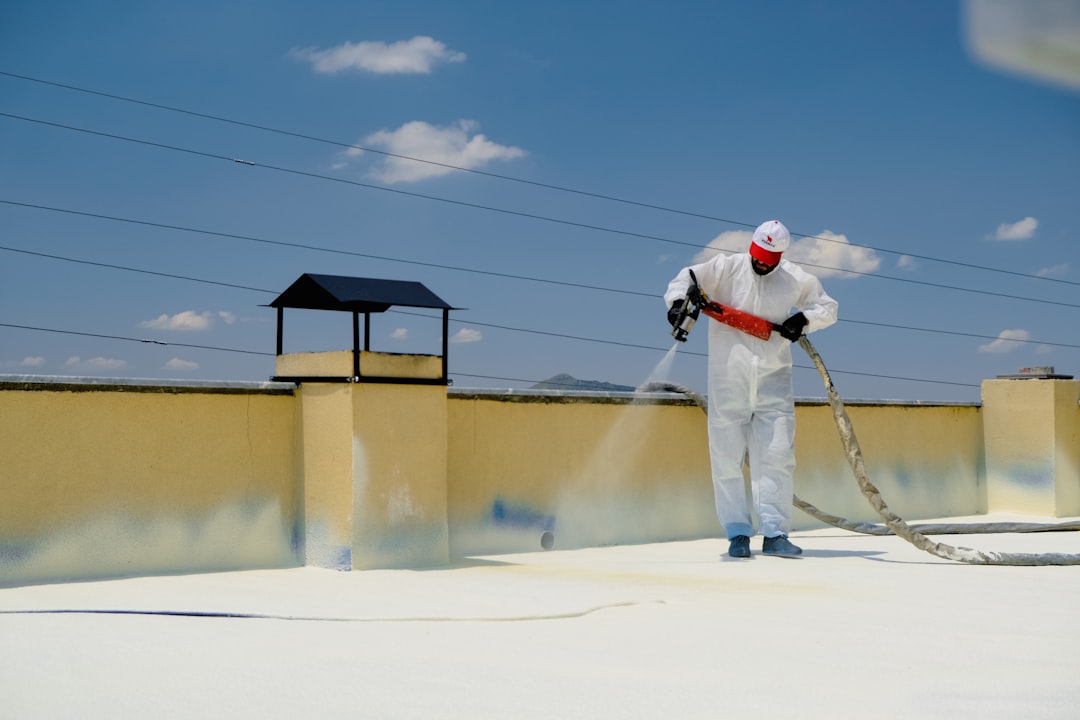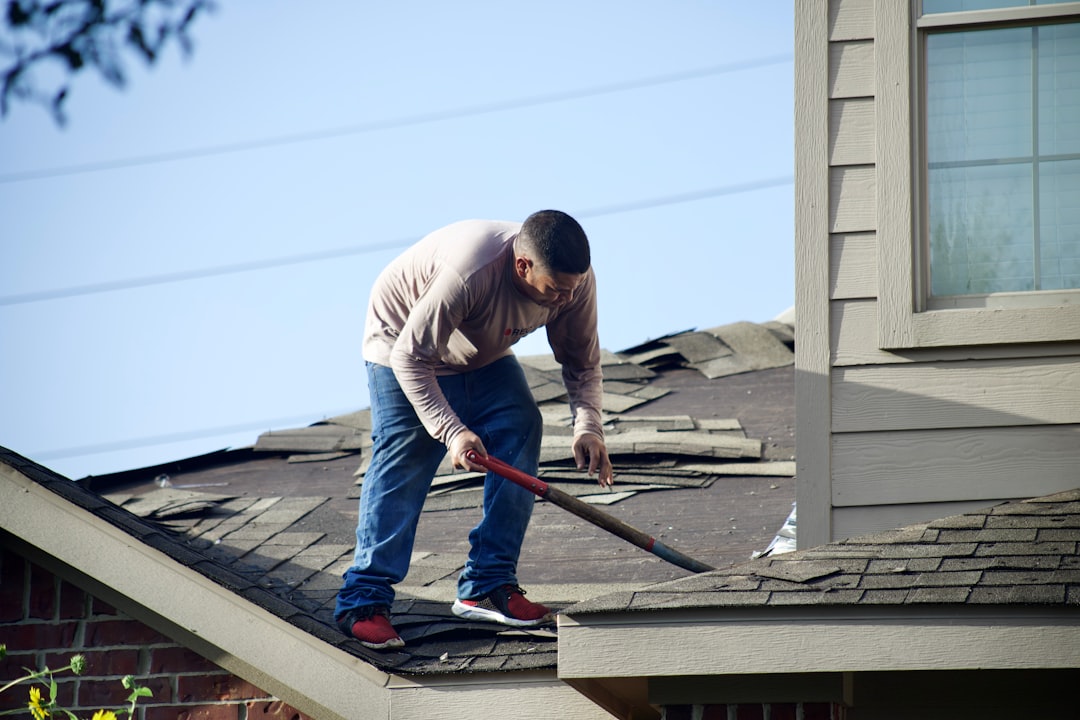

Engage prospects with a scan and streamline customer engagement with FREE QR code marketing tools by Sona – no strings attached!
Create a Free QR CodeFree consultation

No commitment

Engage prospects with a scan and streamline customer engagement with FREE QR code marketing tools by Sona – no strings attached!
Create a Free QR CodeFree consultation

No commitment
In today’s digitally driven world, QR codes have evolved from a novelty to a strategic powerhouse for turning offline attention into online action. For flat and foam roof repair services, that means connecting job site touchpoints, printed materials, and equipment labels to instant digital experiences that remove friction for property owners and facilities teams. Scanning a code can launch an estimate form, pull up a warranty, open a maintenance log, or trigger an emergency response flow without an app or complex setup.
Think of QR codes as access enablers. They give homeowners, property managers, and contractors immediate access to the right information and next steps at the exact moment of interest or need. From roof hatches and service stickers to yard signs and invoices, every surface can become a portal to booking, documentation, safety protocols, and progress visibility. The result is faster conversions, better customer experience, and clearer attribution from scan to revenue.

QR codes bridge the gap between physical touchpoints and digital outcomes. In flat and foam roof repair, enabling access means cutting the wait time between noticing a problem and getting help, shortening the distance between a job site and project updates, and opening up maintenance and warranty documents wherever crews are working.
Here is how to do it effectively:
Flat and foam roofing still relies on paper-heavy processes such as printed inspection reports, manual timecards, and physical warranty folders. QR codes replace these with digital journeys that reduce errors and speed up response. They improve client satisfaction while giving your office staff cleaner data and higher-quality pipelines. Sona QR is built to support every step of that transformation, from code generation and routing to analytics and CRM sync.

QR codes solve practical challenges that roofing teams face daily, especially in environments where safety, speed, and documentation are non-negotiable. They turn static assets into interactive tools that move customers and crews to the right page or workflow instantly.
In roofing, the most effective materials to upgrade are estimate folders, inspection reports, roof access signage, proposal PDFs, work-in-progress notices, safety boards, warranties, and job site signs. Once you add QR codes to these, you turn static paper into a measurable sales and operations engine.
Different formats serve different jobs. Focus on the ones that enable fast action and high-quality data capture for roof repair scenarios.
With Sona QR, you can generate and manage each format centrally. For this vertical, prioritize web links and forms for lead capture and workflow automation, vCards for relationship building, and SMS for emergency response.

Your best opportunities are where people are already interacting with your brand or your job sites. Map codes to those surfaces and flows to shorten the path to action.
The key is to match QR placement to intent and context. High-visibility public placements drive awareness and lead capture, while on-equipment or access-point codes enable operations and documentation access.

Translate everyday interactions into measurable digital outcomes. Here are high-impact use cases mapped to common touchpoints.
When deployed consistently, these use cases can raise lead capture rates by 25 to 40 percent on local placements, improve proposal acceptance by 10 to 20 percent through interactive galleries and financing links, and raise maintenance plan enrollment by 15 to 30 percent thanks to easier access to logs and reminders. For more ideas, explore QR marketing for roofers.
Every scan is a strong intent signal. By placing unique QR codes across touchpoints, you automatically segment your audience and power smarter follow-up.
For roofing teams, this level of segmentation turns a general-interest crowd into high-signal lists: emergency responders, same-week inspection seekers, warranty holders, maintenance plan prospects, and referral-ready promoters. That precision lowers cost per acquisition and boosts lifetime value through timely upsells.
QR codes are connectors between your offline presence and your digital engine. Use them to make every channel measurable and actionable in real time. See this local roofing marketing blueprint for complementary tactics.
QR codes serve as the offline onramp to your digital marketing engine. They also unlock a new data layer across channels that were once difficult to measure. With a centralized platform like Sona QR, you can manage all your codes, monitor performance by placement and persona, and sync scan data with your CRM and ad platforms for coordinated follow-up.
Launching your first QR program does not need to be complex. Use this five-part checklist to go from idea to measurable results, then scale into standard operating procedures across your teams.
Decide which access gap you want to close first. For most roofing teams, the best starters are emergency leak triage or instant inspection request on yard signs. If you focus on commercial accounts, begin with roof access and safety documentation at the hatch.
Tie the use case to a concrete goal such as book 30 new inspections this month from yard signs in ZIPs 85004 and 85006 or shift 80 percent of roof access sign-ins to digital checklists at our top 10 commercial sites. The clearer the outcome, the easier it is to evaluate success and secure buy-in.
Choose the right format. Static QR codes work for fixed destinations such as a general brochure PDF or your homepage. Dynamic QR codes are better for campaigns and workflows because you can change destinations without reprinting, add UTM parameters, and track scans by time and place.
In roofing, dynamic is recommended for almost every customer-facing use case. It lets you route emergency scans to a different on-call form after hours, update project galleries, and split test pages for conversion improvement. Use Sona QR to generate dynamic codes with built-in tracking and segmentation tags. Start creating QR codes for free.
Brand your QR codes with your logo and high-contrast colors. Add a visual frame and an action-oriented label such as Scan to schedule your flat roof inspection or Scan to see warranty details. Surround the code with safe space so cameras can acquire it quickly.
Test on multiple phones, in different lighting, and at different distances. Yard signs need large codes and thick modules so they scan from several feet away. Roof access stickers need scratch-resistant print and a protective laminate. Always verify the landing page is mobile optimized with quick forms and large tap targets.
Roll out codes to the physical and digital placements aligned with your goal. For lead generation, prioritize door hangers, yard signs, truck wraps, and direct mailers. For operations and documentation, prioritize roof access tags, estimates, and invoices.
Match deployment to behavior. If you serve HOAs or property managers, include codes in meeting packets and signage in building lobbies. For residential areas, door hangers and mailbox flyers with neighborhood-specific codes often outperform mass media. Track each placement separately with unique dynamic codes.
Monitor performance in Sona QR. Review scan volume by day and location, scan-to-form completion, and booked appointment rate. Identify drop-off points, such as form abandonment on step two or slow-loading pages.
Iterate weekly. A or B test CTAs, offer phrasing, and landing page layouts. Shift budget toward neighborhoods, events, and placements producing the highest scan-to-book rates. Standardize winning patterns into playbooks: for example, the best performing door hanger uses a short URL below the QR and a three-field form with photo upload.

QR codes are not just about engagement. They are about measurable business outcomes. For roofing operations and marketing teams, tracking scans and attributing revenue is critical to improving spend efficiency and proving impact internally.
Knowing someone scanned a code is useful, but without connecting that action to the buyer journey, the story is incomplete. You want to know which code generated the estimate request, whether that request led to a site visit, how it influenced proposal acceptance, and what revenue was recognized. Traditional tools stop at the scan. Sona QR and Sona.com extend through to revenue attribution with identity resolution and multi-touch modeling. Learn more about offline attribution for print and field channels.
With Sona QR and Sona.com, you can:
The result is a closed loop from real-world interactions to dollars recognized. You can stop guessing which materials work and start investing where scans become scheduled appointments and scheduled appointments become profitable projects.
The fastest way to expand results is to strengthen the link between scan intent and the next best action. These best practices fit the media and workflows most common in flat and foam roof repair.
Creative deployment examples that often outperform expectations include QR codes on storm-response door hangers that route to a three-question triage with a photo upload, QR codes on invoices that invite customers to register their foam roof warranty and enroll in a maintenance plan, and QR codes on roof access tags that log who entered and when for safety and compliance. Each of these closes a real access gap while producing data your team can act on.
QR codes are more than shortcuts. They are a strategy for enabling access in flat and foam roof repair services. By placing dynamic codes on the materials and surfaces that your customers and crews touch every day, you convert attention into action and action into reliable data. The experience feels modern and helpful to property owners and facility managers, and it feels organized and efficient to your team.
Here is what they deliver:
With Sona QR, you can generate and track your first codes in minutes. Manage destinations centrally, measure results by placement and audience, and sync insights to your CRM. When you are ready to scale, Sona.com brings attribution that connects scans to pipeline and revenue so QR becomes a core pillar of your performance marketing and operations playbooks. For frameworks, see Sona’s blog on single vs. multi-touch models and modern roofing advertising strategies.
QR codes have transformed flat and foam roof repair services from traditional, paperwork-heavy processes into dynamic, customer-centric engagement channels. Whether it’s streamlining service requests, enhancing communication with clients, or providing instant access to maintenance records, QR codes replace slow, manual workflows with fast, mobile-friendly interactions that boost efficiency and trust. Imagine your customers effortlessly scanning a code to schedule repairs, view warranties, or get real-time project updates—making every touchpoint a seamless experience.
With Sona QR, you can create dynamic, trackable QR codes in seconds, update information instantly without costly reprints, and connect every scan directly to actionable insights that improve service delivery and customer satisfaction. No missed opportunities, just smarter, more profitable service management. Start for free with Sona QR today and turn every scan into a loyal customer and a successful repair job.
Signs include ponding water, leaks after storms, visible damage, and aging roofing materials that may require inspection or emergency response.
Look for services that provide easy access to estimates, warranties, maintenance logs, and emergency support through tools like QR codes for transparency, speed, and documentation.
The article does not specify average costs for flat and foam roof repair services.
While not detailed in the article, foam roofing is implied to be part of services that benefit from fast inspections, maintenance, and emergency response enabled by digital tools.
The article does not provide specific information about the typical lifespan of flat or foam roof repairs.
QR codes connect physical touchpoints to digital actions, enabling instant estimate requests, emergency triage, warranty lookup, maintenance scheduling, and improving customer experience and operational efficiency.
Common QR code placements include yard signs, door hangers, truck wraps, roof access tags, invoices, proposal folders, and equipment decals.
Useful formats include web links for landing pages, forms for lead capture, vCards for contact sharing, SMS for urgent messages, app download links, and Wi-Fi access codes.
They allow customers to quickly scan a code to access prefilled emergency request forms or send photos without downloading apps or typing URLs, enabling faster response.
By using platforms like Sona QR to monitor scan volumes, locations, conversion rates, and linking scans to revenue and CRM data for attribution and optimization.
Use unique dynamic codes per placement with clear calls to action, add UTM parameters for tracking, educate crews and customers on scanning benefits, and test codes for visibility and functionality.
They turn static materials into interactive prompts that guide customers from initial awareness to booking, documentation access, and maintenance enrollment with measurable outcomes.
Use Sona QR's trackable codes to improve customer acquisition and engagement today.
Create Your FREE Trackable QR Code in SecondsJoin results-focused teams combining Sona Platform automation with advanced Google Ads strategies to scale lead generation

Connect your existing CRM

Free Account Enrichment

No setup fees
No commitment required

Free consultation

Get a custom Google Ads roadmap for your business






Launch campaigns that generate qualified leads in 30 days or less.
